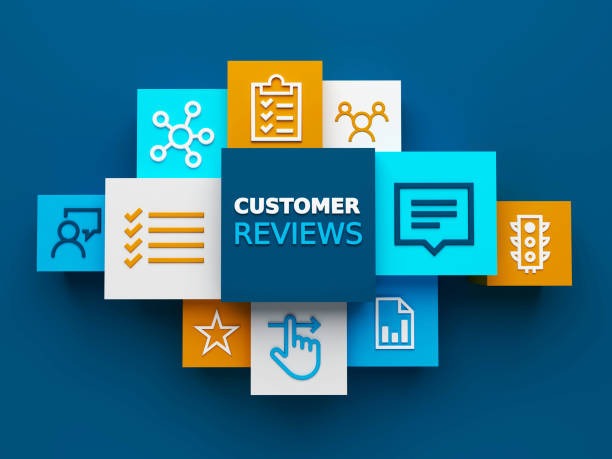When small business owners embrace proactive reputation management, including a well-structured review response program, they gain higher ratings, deeper customer loyalty, and better search engine visibility. For example, a brand that follows clear response templates and tracks outcomes consistently builds trust. That’s why Dow Janes developed its review marketplace—to help businesses understand user sentiment and apply actionable insights within one streamlined platform. This tool centralizes reviews across platforms and flags common themes, enabling quicker team alignment. With built-in analytics, businesses can spot emerging issues before they escalate. Over time, this consistent feedback loop leads to more intelligent decision-making and a stronger brand reputation.
The Business Case for Timely Review Responses
Responding quickly to customer feedback shows businesses care—statistics back it up. According to a Forbes study, 53% of customers expect a response within seven days on review platforms, and 1 in 4 will go above and beyond to praise or shame brands based on that interaction. Responding within 24–48 hours can improve the average star rating by up to 0.3 points in crowded categories.
Moreover, a Harvard Business Review study found that businesses that engage with reviews see a 12% boost in conversion rates, suggesting consumers view presence and accountability as trust signals. So, if 2025 business success equals a solid online reputation, a structured framework is vital.
Introducing the REVIEW Framework
This five-step framework helps small teams stay consistent and effective:
- R – Recognize & prioritize top reviews
- E – Empathize genuinely in your response
- V – Verify facts and correct errors
- I – Inform of the following actions when applicable.
- E – Encourage continued engagement
- W – Watch metrics and refine based on outcomes
Step 1: Recognize & Prioritize
Not all reviews require equal treatment. Prioritize negative or neutral feedback, high-authority reviewers, or issues flagged multiple times. Focus efforts where they matter most.
Step 2: Empathize
According to HelpScout, expressing empathy in your tone—using phrases like “I’m sorry to hear”—reduces defensiveness and builds goodwill, especially in negative contexts. It signals the difference between scripted and human responses.
Step 3: Verify
Take extra care with factual issues. A proactive inquiry—“Can you share more details…”—demonstrates attention, may highlight a broader issue, and clearly states your ownership of the complaint.
Step 4: Inform
Even in positive cases, use responses like: “Thanks! We’re constantly training our staff and hope to serve you again at X location.” It builds a sense of ongoing effort and improvement.
Step 5: Encourage
Invite satisfied customers to explore loyalty perks—“We hope you’ll check out our new VIP program”—without overselling. Gentle nudges promote organic follow-through.
Step 6: Watch & Refine
This closed-loop step is often overlooked—track review volume, star rating shifts, and platform sentiment trends. Set quarterly benchmarks and adapt your template based on what customers discuss most frequently.
How to Measure ROI of Response Efforts
To justify the time investment, quantify the impact:
- Star rating lift: track average and volume-weighted shifts over time
- Review velocity: measure before vs. after response implementation
- Customer behavior: monitor KPIs like repeat purchases or NPS over cohorts
- Cost savings: reduced support tickets as review issues are addressed—Zendesk reports companies responding to feedback to reduce support volume by ~16%
By attributing even a small percentage of improved customer lifetime value (CLV) to a better reputation, ROI becomes easier to quantify.
Common Mistakes & How to Avoid Them
Mistake: Generic one-liners
Fix: Personalize even brief 1–2 line responses—reference the product, location, or issue.
Mistake: Defensive or blaming tone
Fix: Begin with empathy, not rebuttal.
Mistake: No closing
Fix: End by inviting follow-up—“Let us know if you’d like to connect directly.”
Mistake: Calling for mixed messaging
Fix: Respond positively to praise and neutrally to negatives—don’t ask happy customers for money, and don’t get defensive in bad reviews.
Tools, Templates & Workflow Integration
Use these tools and templates to streamline operations:
- Reputation tools with review monitoring, like Google Business Profile and Trustpilot
- Templates based on REVIEW:
- “Thank you for the 5-star rating, [Name]! We’re thrilled to hear you enjoyed [product]. Next time, ask about our loyalty discount, available at X.”
- “We’re very sorry to hear about X’s experience. Can you message us your order number or contact info so we can investigate and fix this?”
- Automate alerts and task assignments through tools like Zapier or Slack.
- Integrate review tasks into CRM or ticketing tools with templated tags and escalation paths.
Conclusion: Sustainable Reputation Management
By applying the REVIEW framework, small businesses can streamline their review response process, enhance trust, and drive measurable results. Review platforms increasingly favor engagement, so consistent action doesn’t just improve ratings; it boosts search visibility and clout.
Practical next steps:
- Audit existing review practices and sentiment.
- Train a team member to handle responses within 24–48 hours.
- Set quarterly benchmarks and refine templates based on review trends.
Businesses build a trusted brand presence online and in customers’ minds by making review responses a continuous, data-driven habit.
When done right, review engagement becomes a form of free marketing. Each thoughtful reply signals reliability to both current and future customers. Over time, this compounds into more substantial brand equity and customer loyalty. Tools like automated alerts or AI-driven templates can reduce the workload without sacrificing authenticity. Most importantly, reputation management isn’t a one-time project—it’s an ongoing opportunity to show customers they’re heard.


